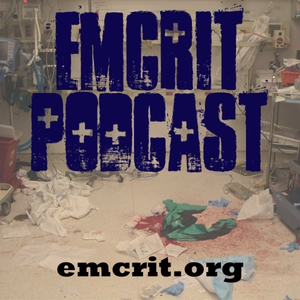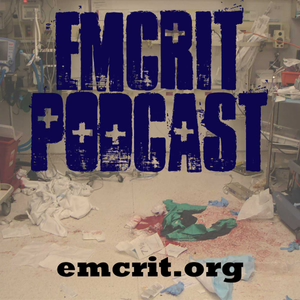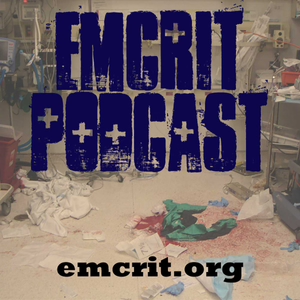
EMCrit FOAM Feed
Scott D. Weingart, MD FCCM


4 Listeners
All episodes
Best episodes
Top 10 EMCrit FOAM Feed Episodes
Goodpods has curated a list of the 10 best EMCrit FOAM Feed episodes, ranked by the number of listens and likes each episode have garnered from our listeners. If you are listening to EMCrit FOAM Feed for the first time, there's no better place to start than with one of these standout episodes. If you are a fan of the show, vote for your favorite EMCrit FOAM Feed episode by adding your comments to the episode page.

07/15/22 • 27 min

2 Listeners

EMCrit Wee - Neuroleptic Malignant Syndrome (NMS) Explosion
EMCrit FOAM Feed
05/01/25 • 25 min

1 Listener

EMCrit Podcast 5 – Intubating the Critical GI Bleeder
EMCrit FOAM Feed
06/22/09 • 12 min

1 Listener


1 Listener

Podcast 91 – Treatment of Aortic Dissection
EMCrit FOAM Feed
01/24/13 • 24 min

1 Listener

EMCrit Podcast 2 – ETCO2
EMCrit FOAM Feed
05/05/09 • 22 min

1 Listener

EMCrit 1 – Sympathetic Crashing Acute Pulmonary Edema (SCAPE)
EMCrit FOAM Feed
04/25/09 • 10 min

1 Listener

04/25/09 • 10 min

1 Listener
Show more best episodes

Show more best episodes
FAQ
How many episodes does EMCrit FOAM Feed have?
EMCrit FOAM Feed currently has 580 episodes available.
What topics does EMCrit FOAM Feed cover?
The podcast is about Health & Fitness, Medicine, Podcasts and Science.
What is the most popular episode on EMCrit FOAM Feed?
The episode title 'EMCrit 328 - Advice to New Residents (But Everyone Else Should Listen Too!)' is the most popular.
What is the average episode length on EMCrit FOAM Feed?
The average episode length on EMCrit FOAM Feed is 25 minutes.
How often are episodes of EMCrit FOAM Feed released?
Episodes of EMCrit FOAM Feed are typically released every 10 days.
When was the first episode of EMCrit FOAM Feed?
The first episode of EMCrit FOAM Feed was released on Mar 1, 2009.
Show more FAQ

Show more FAQ